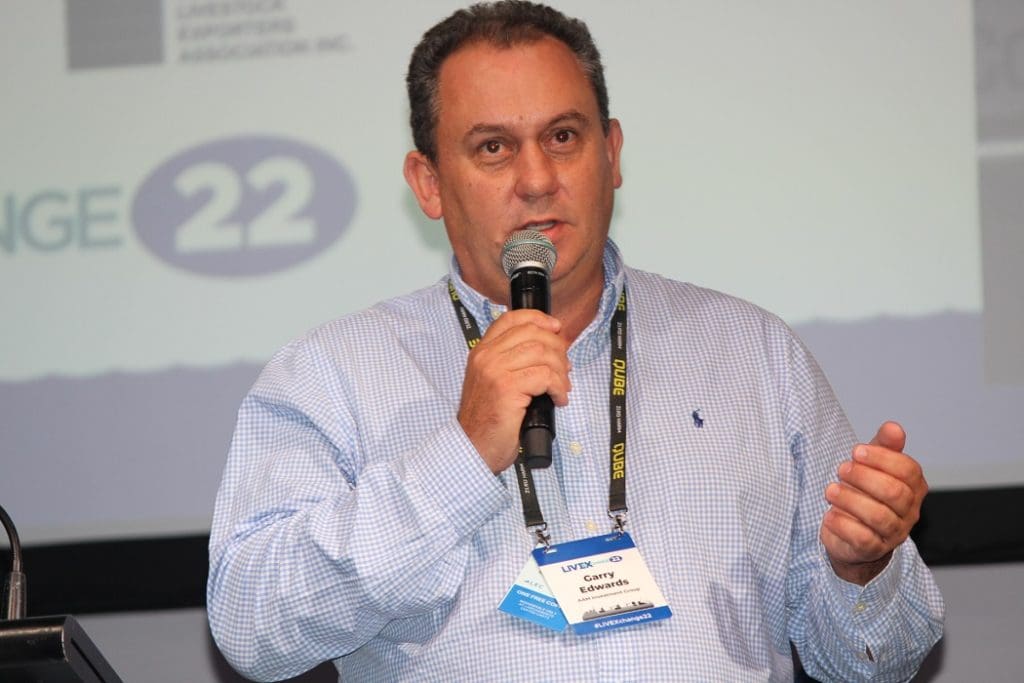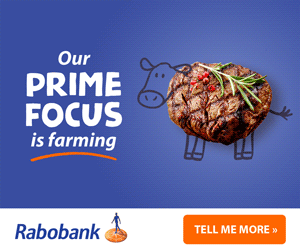
AAM CEO Garry Edwards: “The basic theory is if you’re explaining you are losing.”
LIVE camera feeds across northern Australian supply chains will play a role in a bold social license transparency initiative for investors in the major agricultural investment group AAM, the LIVEXchange 2022 conference was told in Darwin yesterday.
In a discussion on building social license foundations, AAM Investment Group chief executive officer Garry Edwards described what the business needed to do for its investors, particularly in beef cattle production, and for live export, in northern Australia.
AAM Managed Investments manages 27 assets that will have a total value exceeding $900 million by the end of 2022. These span beef cattle, lamb and wool sheep, cropping and poultry production, and sustainably-sourced timber supply chains in five states and territories.
“Currently from those assets we sell around 28,000 to 30,000 head of cattle to live export supply chains with that number expected to increase above 45,000 next year based on our latest northern beef supply chain investment expansion, Mr Edwards said.
“This is not just about what live exporters are expected to do, it is actually what we are expected to do in partnering with them as supply chain partners,” he told the Darwin conference.
 Mr Edwards said 100 percent of the business’ fund investors are Australian domestic shareholders, and that comes “with some interesting opportunities, but also some incredible challenges.”
Mr Edwards said 100 percent of the business’ fund investors are Australian domestic shareholders, and that comes “with some interesting opportunities, but also some incredible challenges.”
He said these challenges included the public perceptions created by the 2011 Indonesian live cattle ban and the damage that did in the hearts and minds of urban Australians and people who have not been on a northern cattle station or on a live export boat, or seen what happens in AAM’s beef production supply chains or met the customers in Indonesia and Vietnam and other countries.
He said the initiative is a demonstration of the ‘S’ piece in ESG (environmental, social, and governance), rather than being about sustainability.
“It’s about social license and what does that social license mean?
“It means the expectations of our shareholder-investors in giving us money, in trusting us to invest in operations here in northern Australia, to responsibly grow agricultural production, in this case predominantly beef cattle production, and what that means in regard to supply chains,” he said.
“I would spend literally hundreds of hours in meetings explaining why live exports are a great supply chain, why they are a great economic activity for northern Australia and why it is absolutely the responsibility of these people to support this if they want to support the communities of northern Australia.”
But he said it was also important for the investors to hop on a boat or plane to meet the overseas people that require the protein.
“This is about humanizing the story, it’s about an absolute commitment that we have to make in every part of our business, from the station all the way through.
“It’s not just about animal welfare, it’s about training people, it’s about investing in people, it’s about working with communities and creating positive outcomes,” Mr Edwards said.
Transparency commitment needed from supply chain partners
As part of the initiative AAM has started to formalize relationships with supply chain partners, refusing to work with supply chains that aren’t as committed to transparency as AAM is.
This encompassed “positive engagement” with live export partners to be involved in independent audits, allowing access to in-country supply chains, and equally importantly, access to what happens on participating Australian cattle stations, he said.
He said “it’s not a one-way traffic” and there has been too much focus on the live export aspect.
“This actually starts on the station and goes all the way through.”
Mr Edwards said the group’s commitments in this area had already turned around a few big investors who had categorically refused to invest in northern Australia “because of what their children had heard in school and what they saw on Four Corners”, but are now actively investing.
“It’s all about 100 percent transparency now.
“We can’t expect anything of our partners that we aren’t prepared to do ourselves,” he said.
This “100pc open transparency,” included “actively demonstrating and communicating” what happens on stations, on transports, on live export vessels and in feedlots overseas, Mr Edwards said.
He said AAM’s commitment after accepting investors’ funds to act with “100pc integrity” is driving its action.
“The historical concept to take a thing to the lowest common denominator to allow multiple people to trip over it is complete and utter bullshit.
“If you really have a focus on what you are doing and you are true to that, you should not ever fear inviting people in, because if you have fears you probably should ask what it is that we are doing that is giving us that fear,” he said.
Be proud to invite people in…
Mr Edwards said AAM invited Landline into its poultry operations with the only access restrictions revolving around biosecurity protocols.
“That was absolutely about the transparency of opening up our farms and opening up our people to see what modern-day protein production is, no matter what species that is.”
“We should be proud to open up and invite people in, obviously we have the natural restrictions of biosecurity … but if we aren’t prepared, as a producer, as a supply chain, to be open and transparent about that, we really have to understand that that is the truth of our social license,” he said.
On the industry’s engagement with the public after the 2011 ban and on being on the “front foot”, Mr Edwards said: “The basic theory is if you’re explaining you are losing.”
The company had chosen to lead rational discussions rather than react as the industry had in irrational debates with activist groups that have well-funded agendas.
“If we are doing something in our business that we are not prepared to have on video, in the lovely age of social media, then we have a problem.
“The reality is that the community today operates in an instantaneous world of communication where it doesn’t matter whether it’s fact or fiction, once it’s out there it’s out there and you’re responding.”
Mr Edwards showed the conference the first of many videos it will create about its investments in the people, communities and businesses in northern Australia and in Indonesia to be shown to banks and investors.
“This is far away not the end, it’s the very beginning.”
The initiative will also include opening AAM properties to investors for personal visits.
Live feed cameras expected throughout AAM supply chains
On the use of cameras to maintain social license, Mr Edwards said AAM already had live video feed situations in its poultry operations.
“We reasonably expect that we will have live feed situations in all of our supply chains, whether they be poultry, lamb, beef, what have you.
He said having “nothing to hide” is a core element of AAM’s transparency.
Mr Edwards said AAM’s Dorper operation in western Queensland produced up to 50,000 lambs a year, although the group had been forced to find other markets than the United States to continue to use pain relief treatments for marking.
On the role of peak industry bodies in building social license and opening up transparency, Mr Edwards said “communications would be a great start.”
“And being not afraid to go out and communicate, publish, promote all the tremendous aspects of our industry and stop apologizing for what’s occurred in the past.
“Because this is about the future and if we don’t focus on the future and if we don’t start actually being prepared to raise the bar, but more importantly to actually communicate that the bar has been raised,” he said.
“Because too much of this stuff that our peak bodies are forced into is what occurred retrospectively and how we need to go back and explain something that has been unpleasant viewing.
“So what I hope happens with our peak bodies in the future … is that they start proactively talking about what we are doing and how we are engaged in society and what that means,” Mr Edwards said.
“Every time we sit and talk about the past we are behind, if we can’t actually move on … and the challenge for all those peak bodies (sheep, cattle, beef and wool) and the people that sit on them is to look to the future.
“To learn from what’s gone on in the past, we are well behind the incredibly well-funded, sometimes irrational, activist groups.”
Mr Edwards said it is “shocking” that it took activist action to stimulate industry communication about what it does.
“We need to stop apologizing, we need to be prepared to call out the poor behaviour that happens and not make excuses for it.”

What a brilliant quote from Garry’s presentation.
“The basic theory is if you’re explaining, you are losing.”
Our Australian cattle industry needs to make this our motto for all aspects of our production chain including environmental concerns. If we are proactive, there is a lesser need to be reactive!